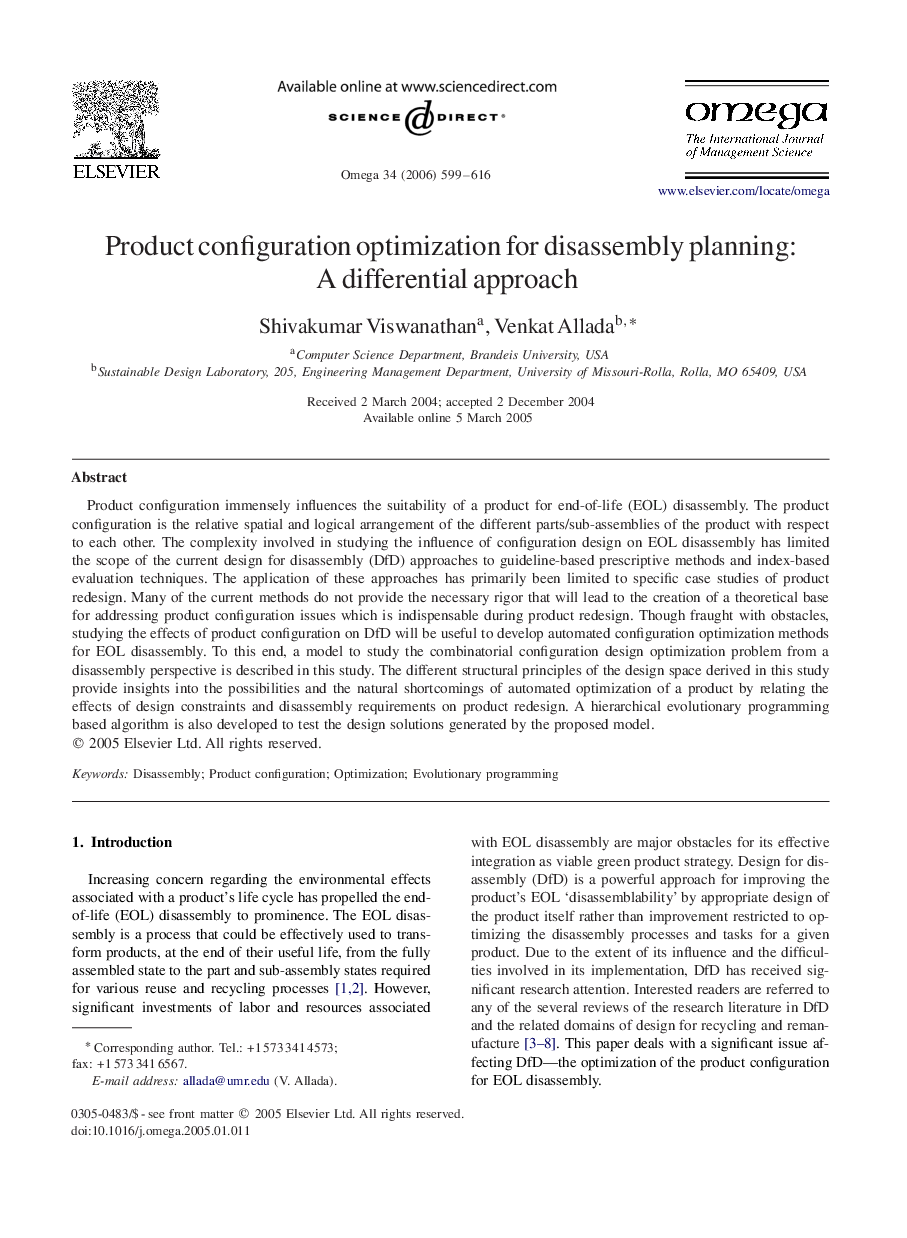| Article ID | Journal | Published Year | Pages | File Type |
|---|---|---|---|---|
| 1033424 | Omega | 2006 | 18 Pages |
Product configuration immensely influences the suitability of a product for end-of-life (EOL) disassembly. The product configuration is the relative spatial and logical arrangement of the different parts/sub-assemblies of the product with respect to each other. The complexity involved in studying the influence of configuration design on EOL disassembly has limited the scope of the current design for disassembly (DfD) approaches to guideline-based prescriptive methods and index-based evaluation techniques. The application of these approaches has primarily been limited to specific case studies of product redesign. Many of the current methods do not provide the necessary rigor that will lead to the creation of a theoretical base for addressing product configuration issues which is indispensable during product redesign. Though fraught with obstacles, studying the effects of product configuration on DfD will be useful to develop automated configuration optimization methods for EOL disassembly. To this end, a model to study the combinatorial configuration design optimization problem from a disassembly perspective is described in this study. The different structural principles of the design space derived in this study provide insights into the possibilities and the natural shortcomings of automated optimization of a product by relating the effects of design constraints and disassembly requirements on product redesign. A hierarchical evolutionary programming based algorithm is also developed to test the design solutions generated by the proposed model.
